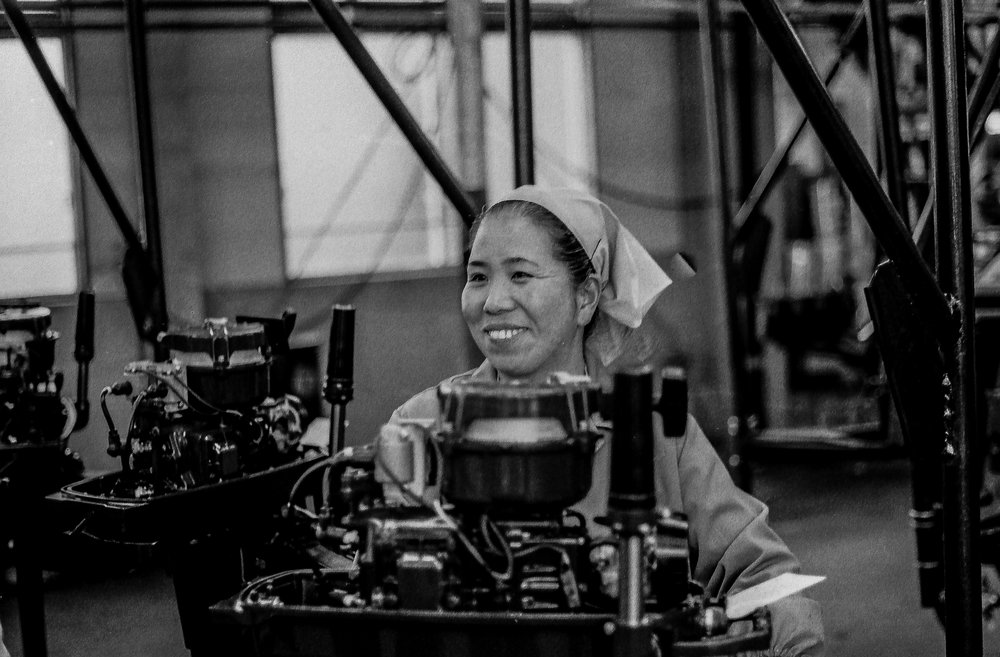
Japan was a relatively exotic and mysterious destination back in 1979 when I flew in from Australia on a business trip. In Tokyo only the main central metro stations had the station names in western script so navigating the metro unaided was a challenge. Westerners were still very much an oddity outside the main centres. Very few people even in Tokyo spoke any English at all. Taxi drivers spoke none. They could not read Latin script so unless you had your destination written down in Japanese you could not travel by taxi.
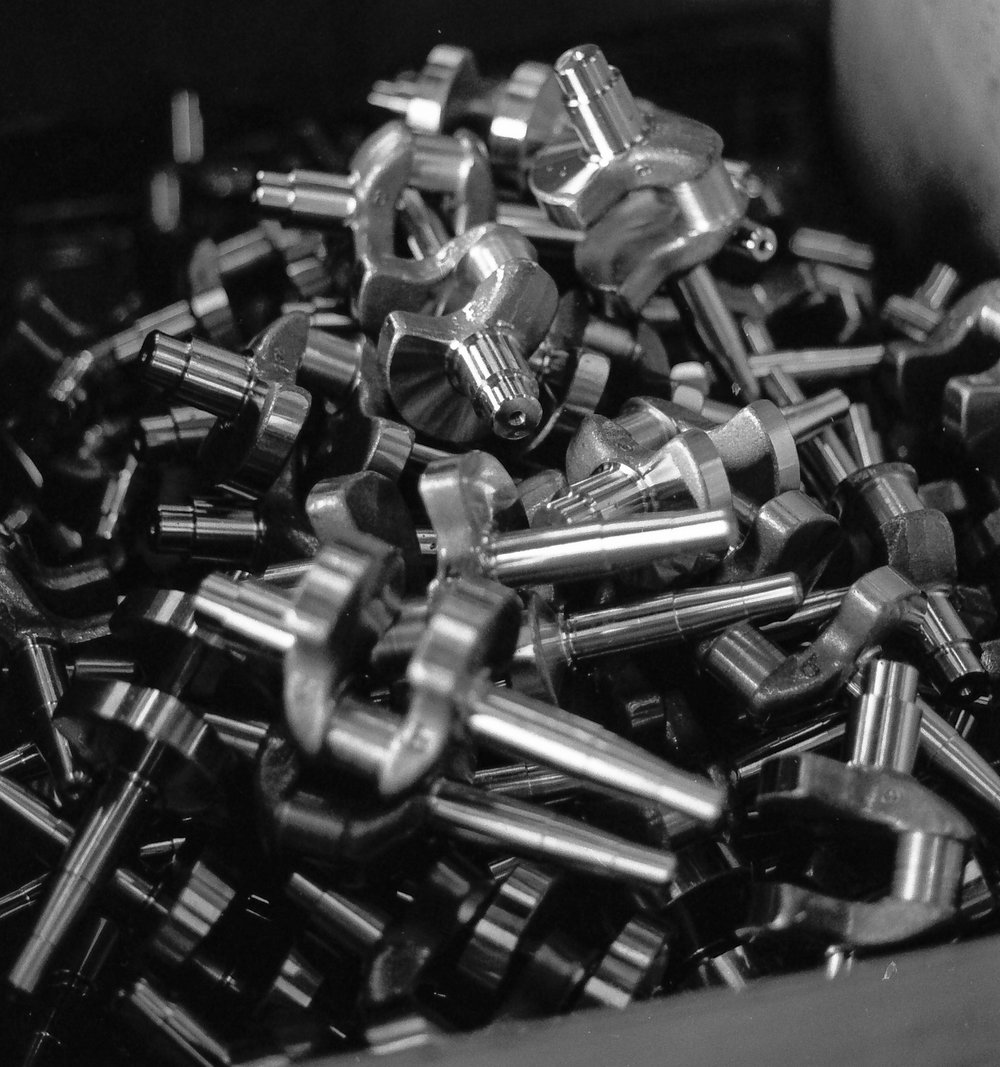
Since that 1979 trip I have visited Japan many times and it has always been an extraordinary experience. In 1985 my wife’s sister and family were living in Tokyo so we visited them and I even drove my family without a guide and, of course, without GPS in a big Jaguar extensively on the north island over the Christmas/New Year period when it was snowing. I could not read the road signs. I do not know how I navigated. I must have been very brave or just crazy. I had very much a “no worries” attitude then. I probably still do.
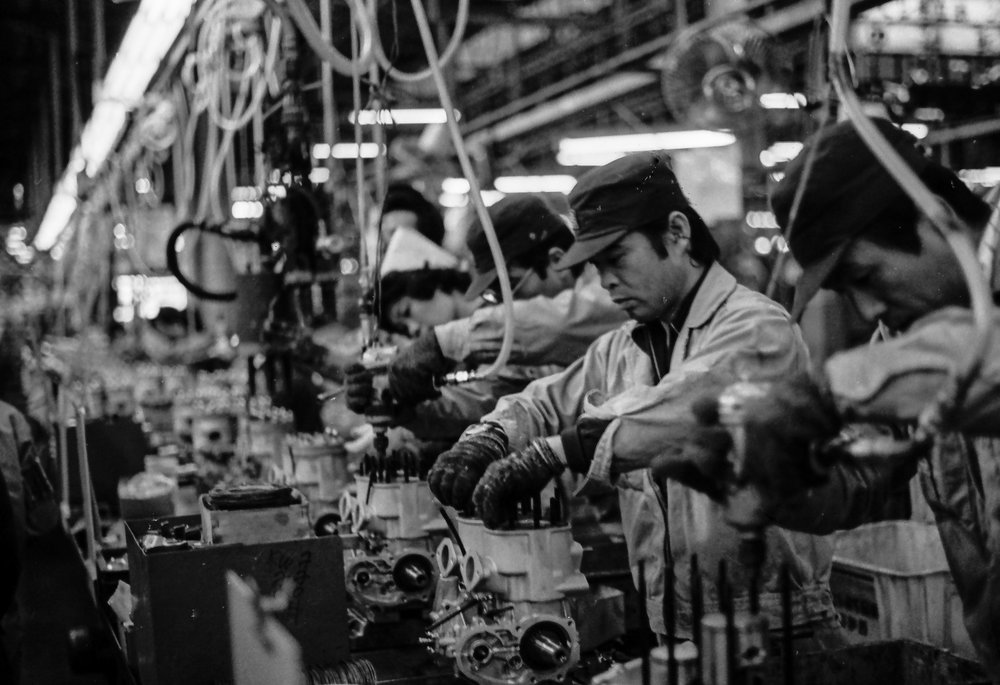
I had my Olympus OM2 SLR with me on that first trip all those years ago. The yen was very weak then against the Aussie dollar so camera gear was a real bargain in Tokyo and I bought a 28mm Zuiko lens for the Olympus. The camera stores in Tokyo were loaded with gear, much of which we had not seen in Australia. It was very tempting but back in those days I was on a tight budget.
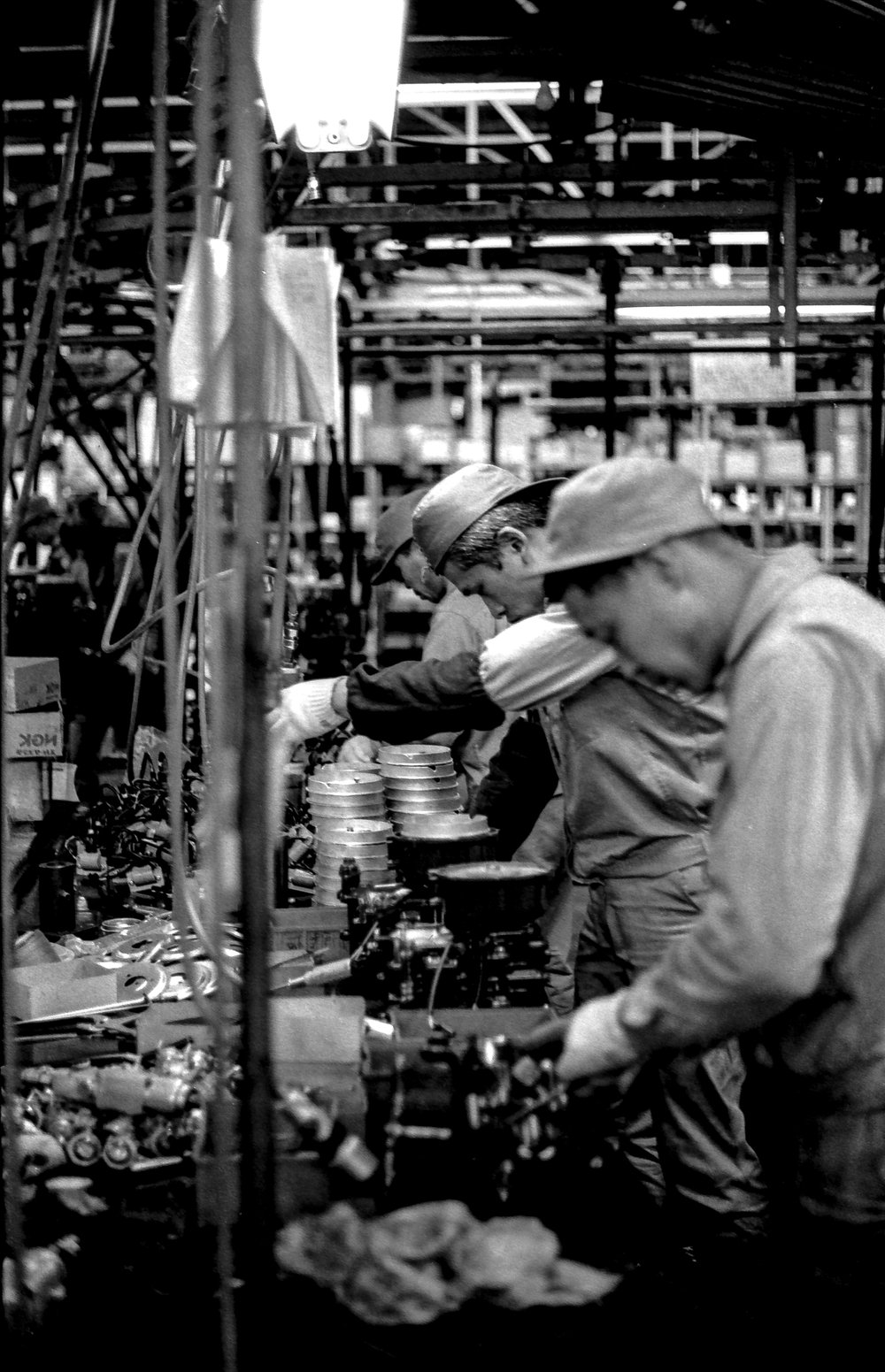
I took photographs in the Kawasaki small motor and motorcycle factories and Tohatsu outboard motor factory I visited. As the light was very poor I used a very fast film — Ilford HPS — which was harsh and grainy and which I developed at home. The photographs were all taken on the run as I was on business factory visits rather than sightseeing. Focusing was very difficult in the low light and even with the fast film the shutter speeds were slow. Camera shake ruined quite a few of the shots.
The factories were very noisy, hot, dirty and very crowded. They smelt of hot oil and hot metal. As you can see, the working conditions were harsh. OH&S was not a consideration — note the lack of ear and eye protection. It would be so different today. I am sure much of the small engine production is now highly automated or has moved offshore, most likely to China and other Asian countries.
Today they would be much less willing to allow you to take photographs on security grounds. And just imagine trying to focus manually wearing plastic-lensed safety glasses. I was fortunate to record quite literally another time.
Only a couple of these photos were printed at the time. I was too busy with work and a young family to spend hours in the darkroom. In any case they needed printing skills which were beyond me. I found them a couple of years ago in a big box full of thousands of negatives in my garage. With a scanner and Lightroom I have been able to give them visibility I think they deserve.
The photo of the meeting is wonderfully evocative. It reminds me of so many negotiations with Japanese suppliers through the 70s and 80s. It was taken in a meeting room at Kawasaki’s head office in Tokyo.
Japanese meeting rooms were always tired and in need of a freshen up. There were always the mandatory flags on the table. The interpreter was always a young graduate in a very dark suit with the same haircut. He always arrived just on time to pick you up at the hotel in the morning and deliver you back in the evening.
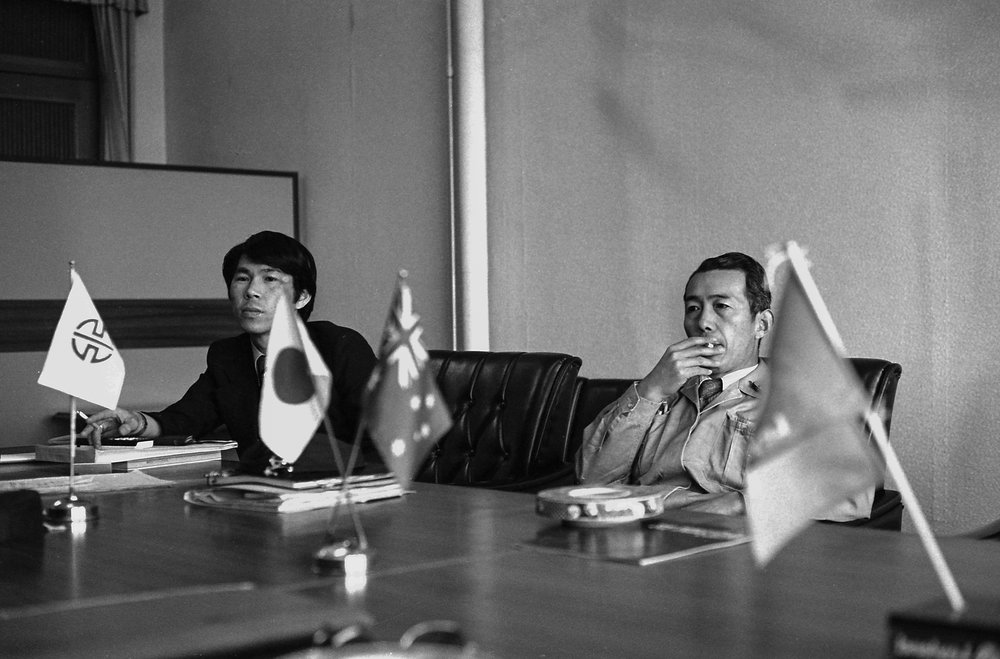
I found out that this particular interpreter lived over an hour out of the centre of Tokyo by train and although he may have left me late in the evening he always turned up bright eyed and bushy tailed right on time early the next morning. And the interpreters very rarely let their guard down. Even when just with the westerners over a few beers they were always inscrutable.
They travelled with virtually nothing. Even when a trip to a distant factory and an overnight stay was involved they brought along nothing more than a very small briefcase. Japanese hotels usually provide toothbrushes and disposable razors in the rooms — what else do you need for an overnight stay? Well maybe the briefcase lived up to its name and just held a tightly rolled up pair of fresh underpants — let’s hope so.
Actually the company men never stayed in hotels. They always went off to the company boarding hostel.
The furniture in the meeting rooms was always the same — heavy Japanese Imperial style. There was always the big circular ashtray placed in front of the head company man. And the head men always looked the same — bored and detached and dragging on a cigarette, hair Brylcreem’d back in Japanese senior management haircut style. And always wearing the workwear boilersuit with a white shirt and tie and a few pens in the breast pocket.
A pall of stale smoke hung over the meetings from those damn cigarettes. In summer it was much worse as Tokyo in summer is very hot and oppressive and the room’s air-conditioning was invariably confined to a small unit ineffectually throbbing away in one corner.
So evocative. I wonder if it’s changed now.
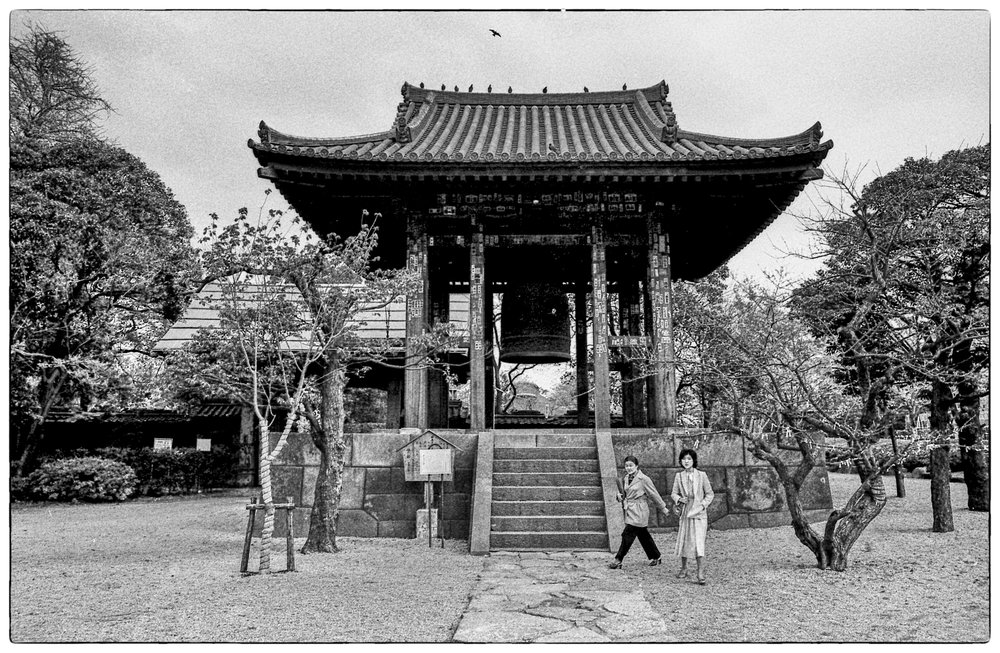
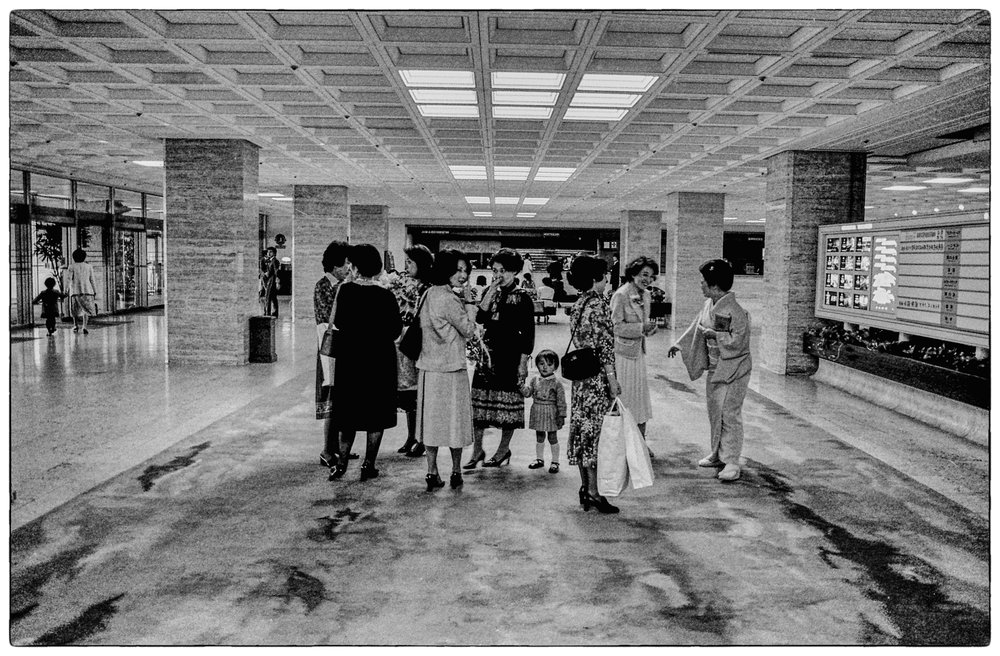
The last four photos are from that same trip. I went in May. Tt was cherry blossom time yet I took only black and white film when colour should have been a given. Despite this lapse, these shots really work for me. My favourite is of the group of ladies chatting in the hotel lobby — everyone so immaculately dressed, including the little girl.
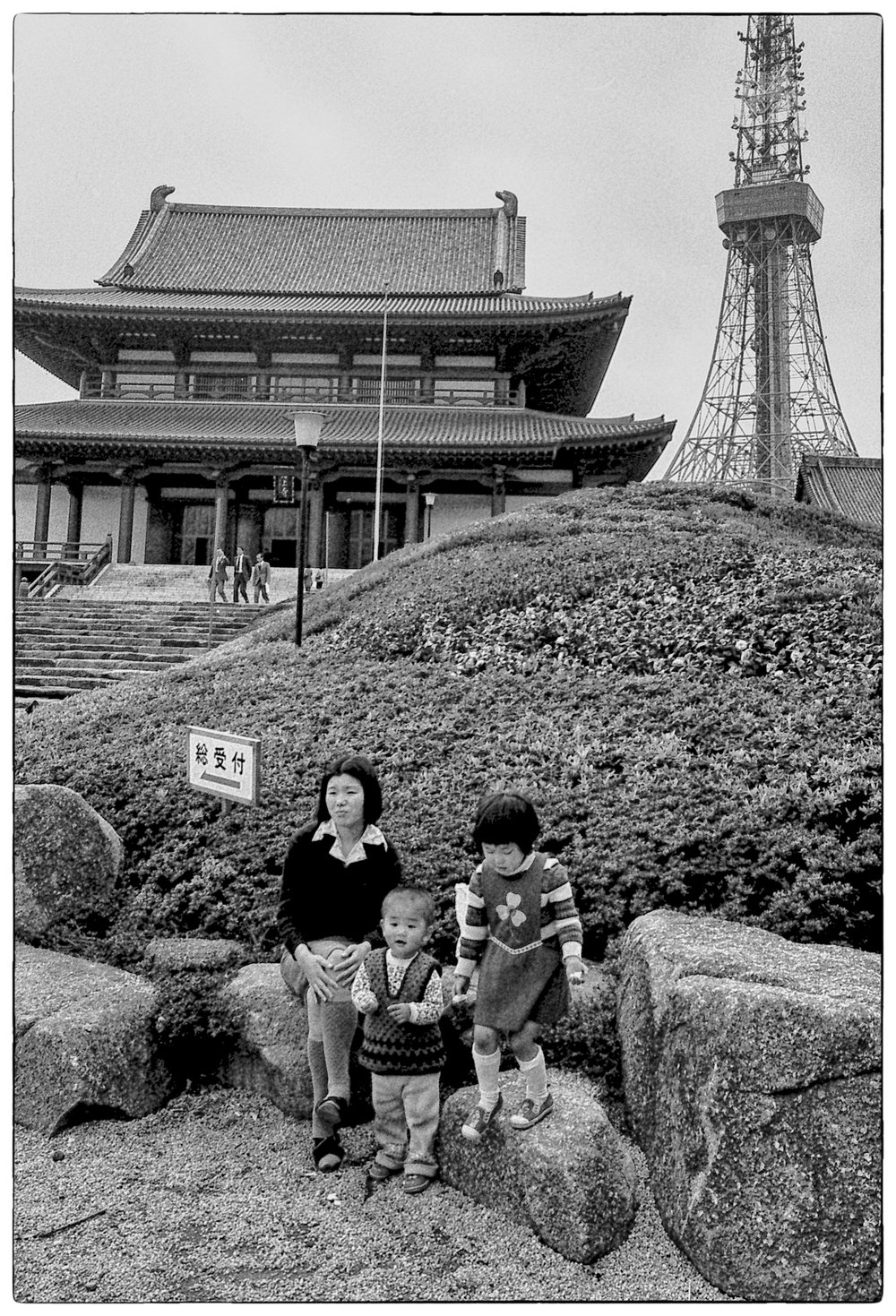
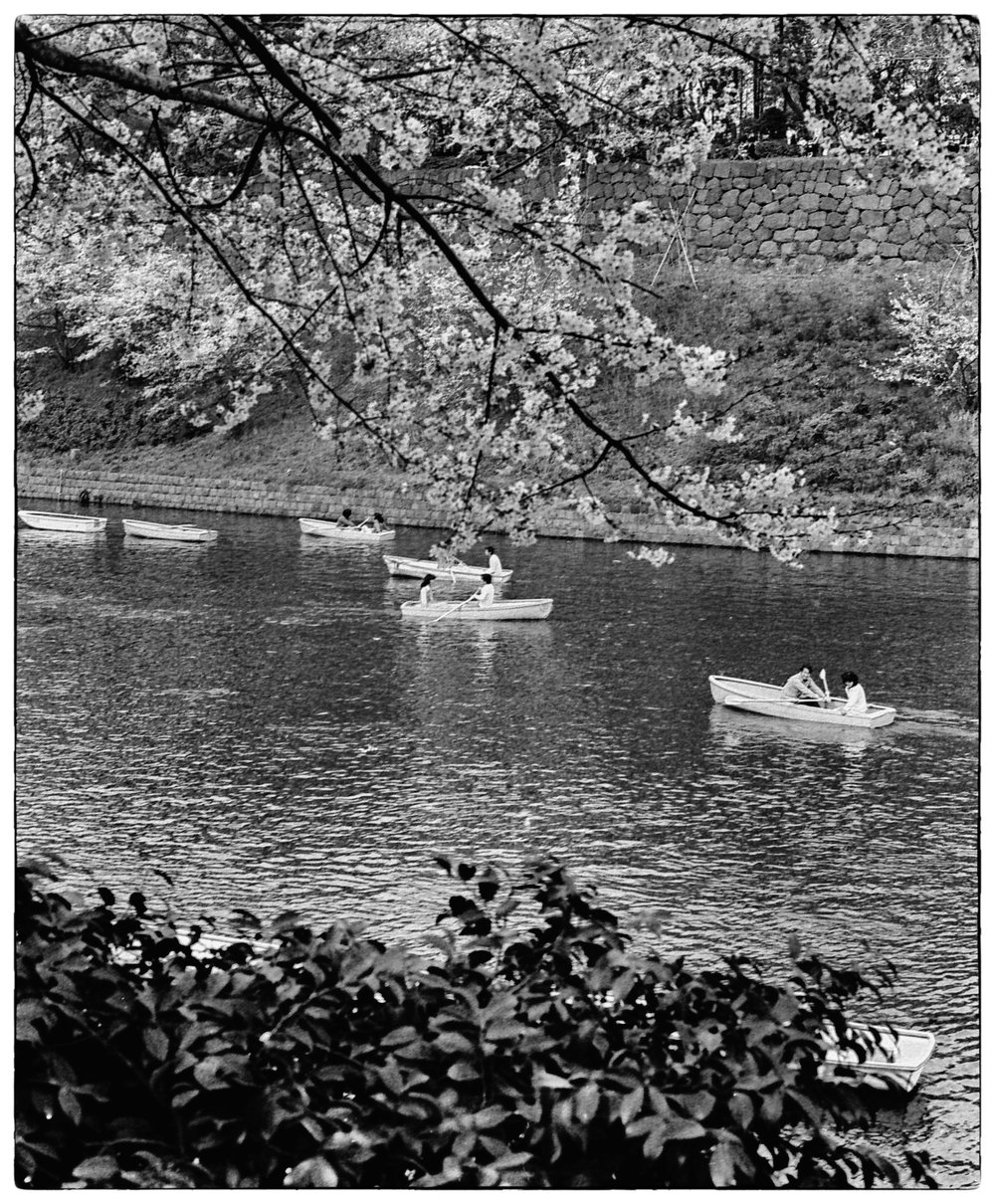
These pictures were from the second film I took on that trip and, looking at them again, they seem grainier and sharper than the first film of factory shots. They were recorded on HP5 film and I suspect that they were developed in Agfa Rodinal, which is a more grainy but higher acutance developer, although I cannot be certain. I also particularly like the photo of the shrine. This looks like an ancient structure but in fact most of Tokyo was destroyed by incendiary bombs in the war, so even apparently ancient structures are reconstructions.
These photos have certainly stirred up a few memories for me.
- You can find more from John Shingleton at The Rolling Road and on Instagram

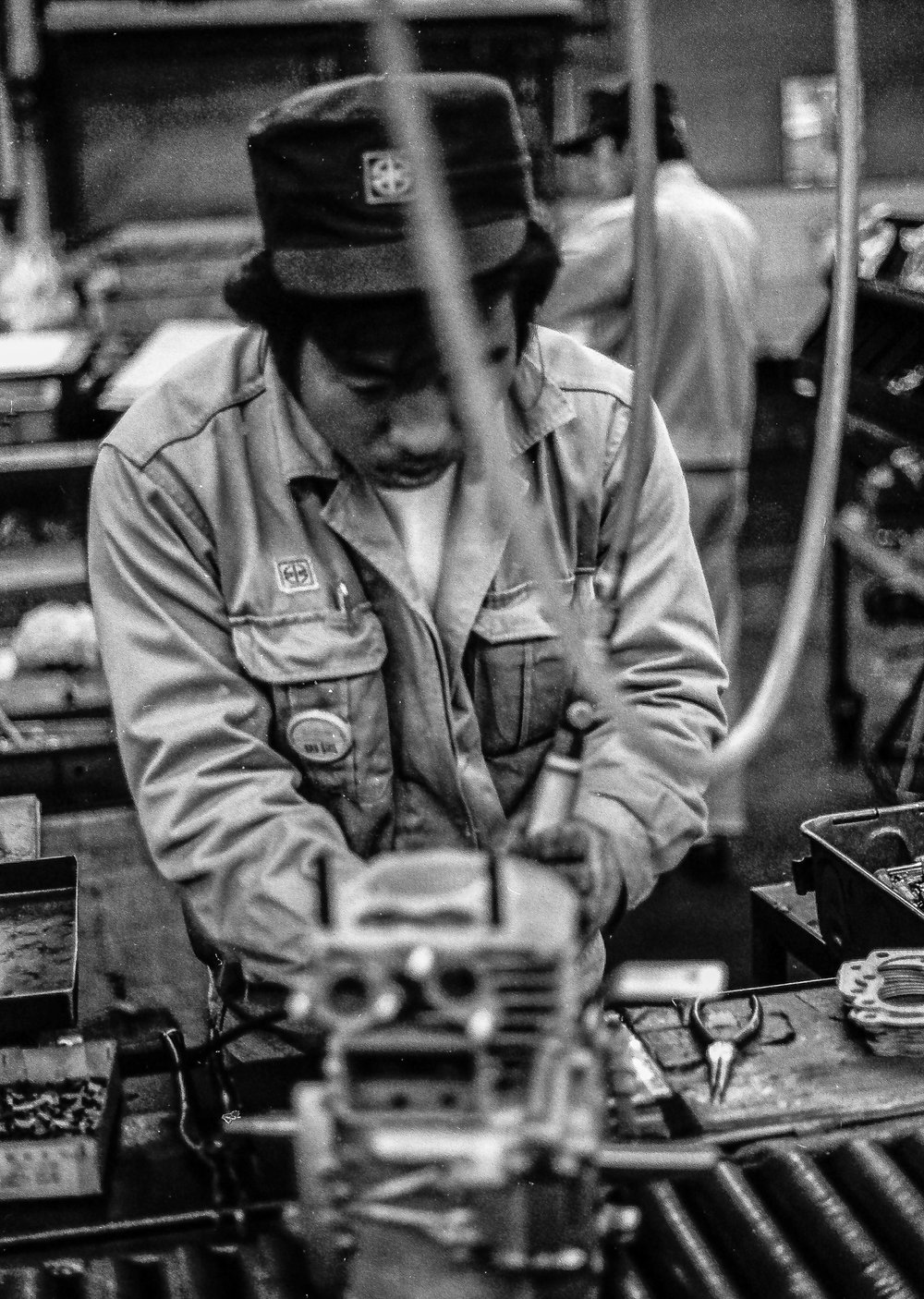
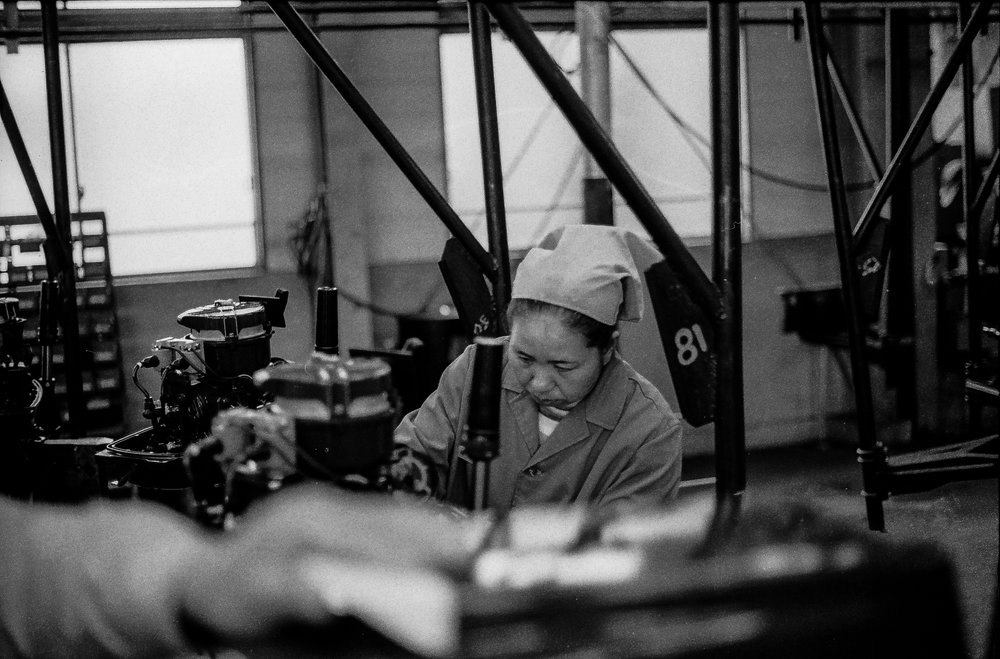
Lovely pictures and story.
I enjoyed these , John.
I also have been scanning negs, mostly Tri-X shot with Nikons but also Fuji CS Reala , which I really liked.
It always stirs memories and is certainly worth the effort.
I have two cousins living in Sydney and we visited Terrigal area many years ago.
I follow your rolling road blog regularly as it always takes me back !!
Ian
Beautiful images and words.
Always a delight to read John’s columns!